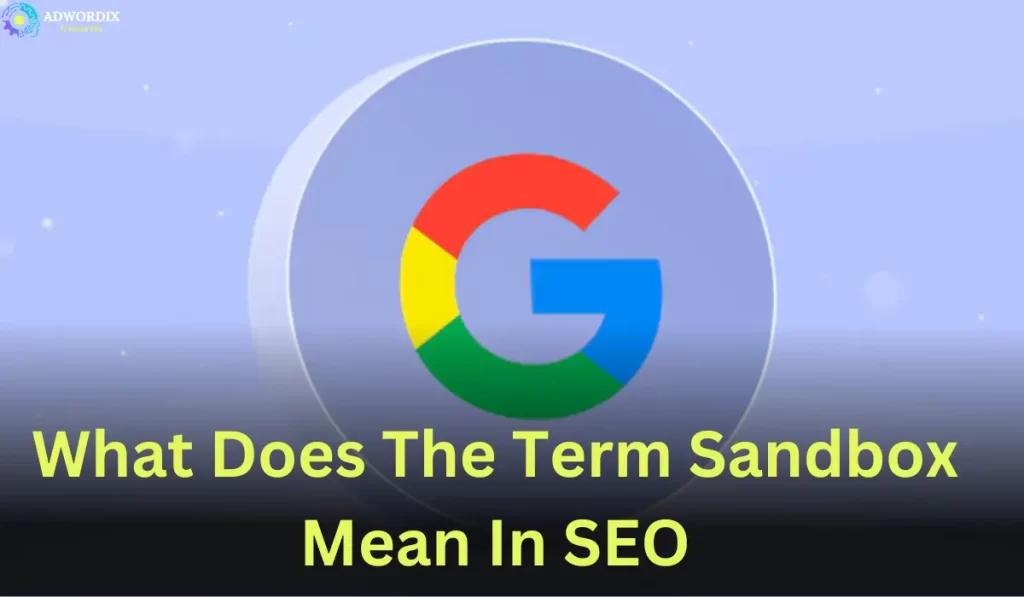Any digital marketer or website owner must comprehend the nuances of Search Engine Optimization (SEO). One term that often pops up in SEO discussions is sandbox. So what does the term sandbox mean in SEO? This article aims to explore the concept and its implications and provide actionable insights on navigating it effectively.
Introduction to SEO Sandbox
In SEO, sandbox refers to an alleged filter or holding period that Google applies to new websites. This concept suggests that new sites may experience a temporary period during which their ability to rank highly in search results is restricted regardless of the quality of their content or the SEO efforts applied. Many search engine optimization experts have seen this phenomenon even though Google has never formally acknowledged the existence of a sandbox.
Why Does the Sandbox Exist? The Theory Behind the Sandbox
The sandbox concept is theorized primarily to safeguard the integrity of Google’s search results. By imposing a probationary period on new websites, Google aims to filter out low-quality or spammy sites that might otherwise manipulate their way to the top of search rankings. By guaranteeing that users obtain the most critical and reliable information possible, this strategy helps preserve search results’ calibre and relevancy. The sandbox acts as a gatekeeper, allowing Google to thoroughly evaluate a site’s content, backlinks, and user engagement before it can earn a prominent place in search rankings.
New Website Growth Control
In addition to protecting search quality, the sandbox also serves as a mechanism to control the rapid growth of new websites. By moderating the pace at which new sites achieve high rankings, Google can better assess their long-term value and sustainability. This scrutiny period allows Google to distinguish between genuinely valuable websites and those attempting to achieve quick artificial growth through aggressive SEO tactics. As a result, only those websites that consistently demonstrate high-quality content, user engagement, and ethical SEO practices are rewarded with higher rankings over time.
Identifying If Your Site Is in the Sandbox
Identifying whether your site is in the sandbox involves observing several vital indicators. One of the most noticeable signs is poor rankings despite comprehensive on-page and off-page SEO efforts. If your site’s content is well-optimized and you’ve built a respectable number of backlinks but your rankings remain stagnant, the sandbox might be at play. Another symptom is slow organic traffic growth; traffic needs to meet expectations despite increasing content and SEO activities. Additionally, delays in content indexing by Google, where new pages take longer to appear in search results, can also indicate sandbox influence.
Tools to Diagnose Sandbox Effect
Although no definitive tool exists to confirm sandbox status, specific SEO tools can help diagnose its effects. Google Search Console is important for monitoring your site’s indexing status and identifying unusual patterns. Tools like SEMrush and Ahrefs can provide insights into your site’s backlink profile, traffic trends, and keyword rankings. By comparing these metrics against your SEO efforts and industry benchmarks, you can infer whether your site is experiencing sandbox-like effects. Anomalies such as significant ranking volatility or unexpected drops in organic traffic can indicate sandbox-related issues.
Factors Influencing Sandbox Duration
- Quality of Content: High-quality, original content that provides value to users is more likely to be recognized positively by Google’s algorithms. Well-researched, informative, and engaging content helps establish your site’s authority and credibility, which can shorten the sandbox period. To ensure that Google gives your content favorable consideration, ensure it is relevant to your target audience and optimized for keywords without sounding spammy.
- Backlink Profile: A robust and natural backlink profile can significantly influence the duration of the sandbox effect. When your website is linked to reputable and relevant websites, Google is notified that it is authoritative and trustworthy. Conversely, a sudden influx of low-quality or spammy backlinks can prolong the sandbox period by raising red flags with Google’s algorithms. Focus on acquiring backlinks organically through guest blogging, collaborations, and producing shareable content. A steady, gradual increase in high-quality backlinks is more beneficial than rapid, aggressive link-building tactics.
- User Engagement Metrics: Google uses measures related to user engagement, such as average session duration, bounce rate, and number of pages per session, to assess your website. High levels of user engagement show that readers value your material and are inclined to interact with it. This positive user behaviour can help reduce the sandbox duration, demonstrating to Google that your site provides a good user experience. Encouraging user interaction through straightforward navigation, compelling calls-to-action, and interactive elements can improve these metrics, signaling Google that your site is worth higher rankings.
- Consistency in Updates: Another critical factor in minimizing the sandbox period is frequently updating your website with fresh, relevant content. Consistent updates signal to Google that your site is active and continually providing new information to users. This practice not only helps keep your audience engaged but also encourages frequent indexing by Google’s bots. Whether through blog posts, news articles, or new product pages, maintaining a steady flow of content can positively influence your site’s ranking potential and help you emerge from the sandbox more quickly.
Strategies to Overcome the Sandbox Effect
- Focus on Long-Tail Keywords: Targeting long-tail keywords can help new sites rank for less competitive terms, gradually building authority and traffic.
- Content Marketing and Blogging: Consistent blogging and content marketing efforts can attract organic traffic and backlinks, aiding in overcoming the sandbox phase.
- Leveraging Social Media: Your website’s visibility and credibility can be enhanced by active participation on social media.
- Guest Posting and Outreach: Writing guest posts for reputable sites and engaging in outreach activities can earn high-quality backlinks and boost your site’s authority.
Common Misconceptions About the Sandbox
- Instant Rankings Are Impossible: Many believe instant rankings are impossible for new sites due to the sandbox. While challenging, with the right strategies, gradual improvements are possible.
- The Sandbox Affects All New Sites: Not all new sites experience the sandbox effect to the same degree. Factors like niche competition, backlink quality, and content relevance play significant roles.
Practical Tips to Avoid the Sandbox
- Pre-Launch SEO Preparations: Conduct thorough keyword research, build a robust content plan, and secure initial backlinks before launching the site.
- Gradual Link Building: Avoid aggressive link-building tactics that can trigger Google’s spam filters. Focus on organic, gradual link acquisition.
- Consistent Quality Content: Ensure content adds value to users, adheres to SEO best practices, and is updated regularly.
- Monitoring and Adjusting Strategies: Track site performance with analytics tools and modify your approach in light of data insights.
Conclusion
Understanding what the term sandbox means in SEO is essential for navigating new websites’ challenges in achieving high search rankings. While the existence of a sandbox remains speculative, the observed effects underscore the importance of a strategic, quality-focused approach to SEO. By prioritizing high-quality content, building a natural backlink profile, and engaging with users, new websites can effectively overcome the sandbox phase and achieve sustainable growth in search rankings. Maintaining knowledge and flexibility in the ever-changing world of SEO is essential for long-term success. These tips and techniques can help you design a strong foundation and accomplish your SEO objectives whether you are launching a new website or managing an existing one.
Frequently Asked Questions
The sandbox in SEO refers to an alleged filter that Google applies to new websites, temporarily limiting their ability to rank well in search results, regardless of the quality of their content or SEO efforts.
The sandbox is theorised to protect the integrity of search results by ensuring new sites earn their high rankings through quality content and genuine user engagement, preventing spam sites from manipulating rankings.
Signs your site might be in the sandbox include poor rankings despite solid SEO, slow organic traffic growth, and delays in content indexing by Google.
Key factors include the quality and relevance of content, the natural accumulation of backlinks, user engagement metrics, and the frequency of content updates.
Strategies include focusing on long-tail keywords, engaging in content marketing and blogging, leveraging social media for visibility, and obtaining high-quality backlinks through guest posting and outreach.





